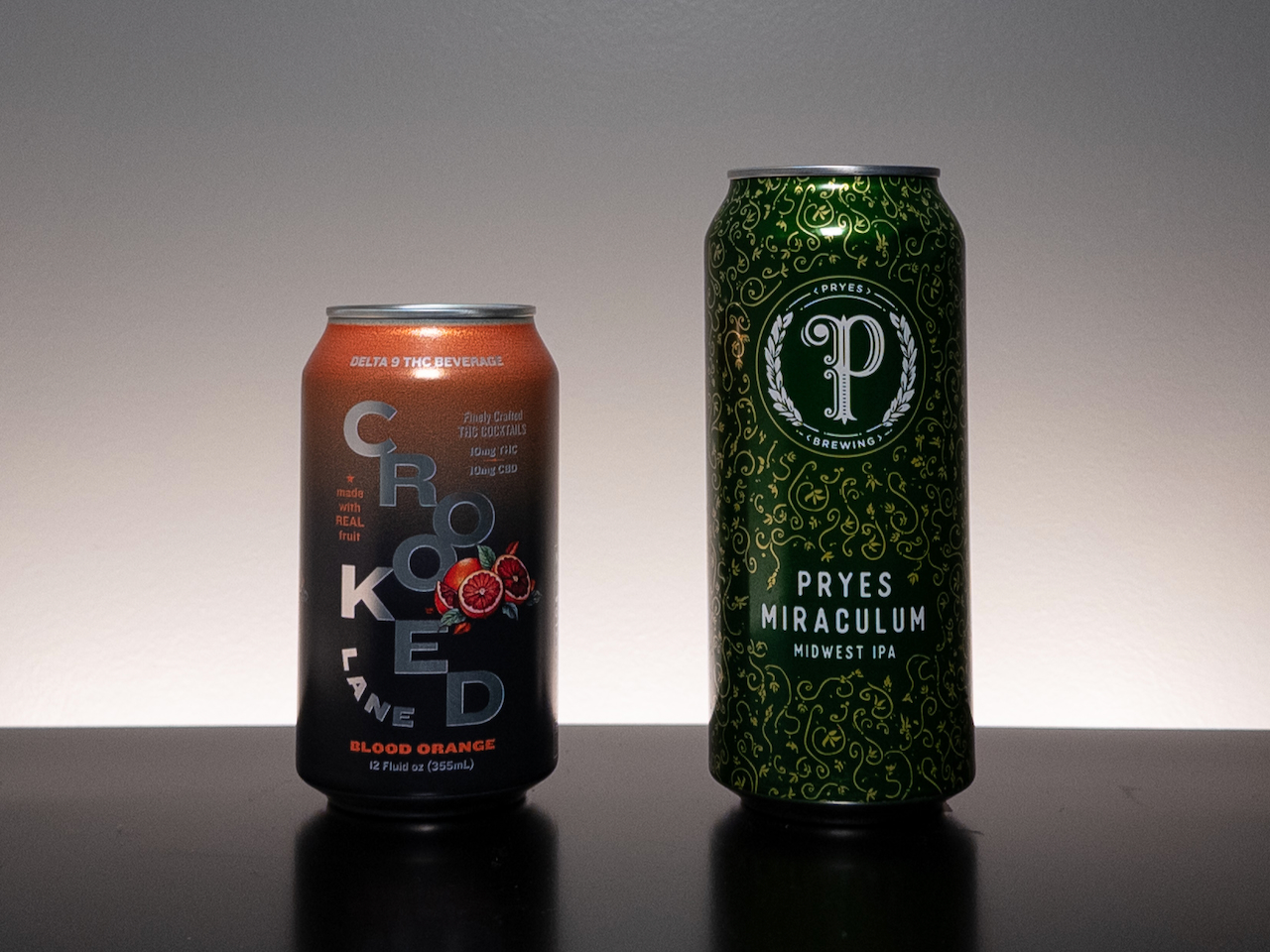Steve Grove once planted poison ivy on purpose.
He shares an anecdote about this odd gardening choice in How I Found Myself in the Midwest: A Memoir of Reinvention (Simon & Schuster, 2025) to characterize himself as a good dad with a Minneapolis backyard in which he’s setting down literal and proverbial roots. Intentionally or not, Grove’s just-because-we-can noxious plant experiment showcases the fleece vest bravado that landed him a job as commissioner of Minnesota's Department of Employment and Economic Development (DEED) after he boomeranged back to his home state from Silicon Valley in 2018, then secured his current position as CEO and publisher of the Minnesota Star Tribune in 2023.
The leaves-of-three bouquet that Grove pots next to a garden plot never gets a follow-up in the memoir, so I spend $20 to attend Tuesday's book launch party at the Parkway Theater, hoping that the staged interview between Grove and Allison Kaplan, editor in chief of Twin Cities Business, covers this psychotic online seed catalog order. I arrive just in time to catch the final song performed by opening band AirLands, whose lead singer thanks the Grove family and signs off with an effusive, “It must be exciting to put out a book!”
The audience of around 175 smartly dressed, luxury-vehicle-driving Twin Citians awws when Grove’s two kids and wife Mary give an adorable introduction, and laughs easily at Grove’s self-deprecating humor. During his hour on stage, Grove points out audience notables like Youthprise Executive Marcus Pope, Minneapolis mayoral candidate Jazz Hampton, Saint Paul & Minnesota Foundation’s Casey Shultz, his musician friend Kevin, state demographer Susan Brower, and his parents. Plenty of folks have hardcovers tucked under their arms, but it’s hard to tell who—beyond Grove’s friends, family, and possibly coworkers gathered at the Parkway—are target readers of the 288-page book, which Grove says he wrote to “put the Midwest in people’s minds in a different way.”
Jacket copy markets the How I Found Myself in the Midwest story as an inspiring personal journey about “going local.” For Grove, going local means relocating to a region that national media outlets perceive as sleepy with a glop of Google money to slosh around, buy a million-dollar home, and pretend that a job at a for-profit newspaper counts as public service. Grove told the Star Tribune’s Chris Hewitt that he proposed the book in order to explain how Minnesotans found themselves in the national spotlight in 2020, but Simon & Schuster wanted more personal stakes in the story. Many readers may see the book as an offering from a man with political ambitions, even though it doesn't have the hardscrabble title mojo of, say, Hillbilly Elegy, Daughter of the Heartland, or True Gretch.
Inside the Parkway, Kaplan, in a cap-sleeved blouse, black trousers, and strappy heels, asks about Grove’s political ambitions straight away. Grove, a g-droppin’ fast talker in a blue button-down, grey slacks, and beige sport coat, easily deflects Kaplan’s question, as well as a “Hypothetically, which office would you run for?” follow-up during the 15-minute audience question segment at the end of the program.
Around half of Grove’s hybrid memoir provides context for recent history, explaining what Minnesotans do well and what we need to work on, in Grove’s opinion. The political and labor history is fairly interesting, but Grove’s surprise schtick gets tiresome. He writes with a Lassie-like “Aren’t I a good girl?” pant, seeking positive reinforcement when he sees complexity and nuance. As a white man, it’s brave of Grove to write about his own unconscious biases when he delves into Minnesota’s insidious structural racism. However, he negates some of his progress on the Intercultural Development Inventory when he racially profiles every person of color in the book but does not mention anyone else’s white mannerisms or white-signifying looks. He also issues a dubious culinary generalization—“It’s hard to find good Mexican food in Minnesota”—in a paragraph about missing California living.
Grove recalls an uneasy childhood and angsty adolescence in Northfield, Minnesota. In his twenties and thirties, he gallivanted along the coasts pursuing degrees and career opportunities. Then, like a good Hallmark holiday movie heroine, he returned to Minnesota to find fulfillment, faith, and familial reconciliation.
Much of the tonally confusing memoir takes place during Grove’s tenure as DEED commissioner. At times he seems charmed by small-town yokels; in other instances, he apparently views hoi polloi encounters as crass photo generating opportunities. Career wins include getting rid of a segment of the DEED dress code that prohibited Minnesota-invented Zubaz pants, for which Grove glad-hands himself, writing, “Improving agency culture was a secret weapon to success.” He recounts quotidian pandemic workplace hardships: His Up North cabin rental vacation is interrupted by the November 2020 virus surge; passing paid family leave is hard; a health official yells at him over Zoom; someone files an ageism complaint with HR after Grove asks for a young person to pick music for an event.
My eyelids slid half-mast, just like they do when I get stuck listening to suburban dads drone on about driveway repaving projects or Mini-Mites stats, both while reading the book and while listening to Grove’s rehearsed answers at the launch party. And yet! I honestly wanted to read more about Grove’s life perspective. The still-youngish executive has a lot of redeeming qualities—he champions his wife, he fixes unemployment insurance for adolescents while at DEED, and he says he shares equally in parenting duties. There’s some decent vulnerability material to work with, like childhood anxiety exacerbated by Jacob Wetterling’s abduction, class conformism forced by the Claremont McKenna classmates who poked fun at young Grove’s long Minnesota Os, and a prodigal son complex complicated by an evangelical Christian upbringing.
But Grove fails to deliver a compelling narrative because, for all his odes to “my old friend Minnesota,” he’s not like us, even though he wants us to know that he grew up without health insurance. If Grove wrote to entertain regular Minnesotans, he’d give us some takedowns of the powerful figures in his social circle. Mary Grove, who’s a major, likable figure in the book, actually worked with JD Vance at a venture capital firm, but Grove deprives us of even one I Can Has Donut Vance-ism.
I don’t mean to be mean. But I have to write about Grove’s writing because he bills himself as a former journalist who's in charge of the Upper Midwest's largest media organization. (The Strib newsroom was reportedly "blindsided" to learn of Grove's extracurricular career as an author.) I swear, I’m not here to tear him down, especially as a freelancer who'd be happy for one of my pitches to land in our state’s most circulated Variety section. But I desire a byline less than I want the Star Tribune enterprise to succeed, and so I must share the paragraph that convinced me Minnesotans would all be better off if Grove left the newsroom behind. Here it is:
Halloween is the best holiday of the year when you have little kids. The whole concept is perfect. You get to dress up in whatever costume you want, go right up to people’s houses to get free candy, and then stay up late eating that candy. It hits just about every button a little kid has.
That syntax sounds like it belongs with Ticonderoga-scrawled loopy cursive subject sentence and supporting paragraph assignments in a wide-ruled spiral bound notebook, i’s dotted with hand-drawn pumpkins. But that holiday paean was written by someone with a master’s degree from Harvard who interned at The Atlantic! To quote Grove’s old boss, it’s weird.
Now, I'm not accusing Grove of using AI to author his book. But I am accusing him of writing like a bot. Grove compliments an event in Minnesota because, “It felt more… human.” He mixes metaphors, poorly: “Trying to chisel into existing social groups in Minnesota seemed like it might be a tough road.” His most original simile describes a trip to Rochester’s Mayo campus that “felt like going to the Google of hospitals.” Grove parenthetically defines the term multigenerational “(families with more than one generation living under the same roof)” because—I’m just guessing here—it’s seven syllables long? The book often reads like Grove didn’t expect anyone to actually read it.
And maybe they won’t. Maybe Grove’s readership is a political donor class who won’t care about sloppy language, who might buy the book for shelf display only, its autumnal themed cover a reminder for successful capitalists to harvest and hoard.
To me, Grove’s lack of literary flourish is worse than propagating poison ivy. Although, in context, it makes sense. For Grove, things just tend to work out. He got his Silicon Valley start by simply emailing his resumé to info@youtube.com. His job sent him to Baghdad and he came back with a girlfriend. Even his book launch party happens to land on the one mild, low-humidity late June day in between a suffocating heat dome and forecasted storms. He’s lucky. Kaplan never asks him about his poison ivy backyard.
Grove’s also self-serving. He slid into important professional positions as his hubris compelled him to take actions without considering the should of his decisions, it seems; he insists on bringing tech industry innovation to government and media organizations because it’s a good look for him and his career, regardless of whether it benefits the Minnesotans at the receiving end of his tech-bro noblesse oblige.
I started Grove’s half-memoir, half-coulda-been-an-article expecting to be critical of his political aspirations, but his attitude toward traditional print media makes me reconsider my bias. In the last chapter of the book, Grove diminishes his publisher job from the get-go, referring to the Star Tribune as simply a “local newspaper,” one he’s “sheepish” to tell his Meta media mogul friend Nick about. His writing style makes me hope that he will soon Peter Principle himself onto the next job.
I don’t care if Grove wants to live in the governor’s mansion or if he’s gunning for a federal cabinet post, should the electoral college tilt toward Walz in 2028. I just want him to leave Minnesota’s fourth estate to someone who cares about the art and accuracy of written language generated by human writers. Grove’s been dicking around, dismissing the power of paper pages for innovation kicks and personal career gain, with a dippy duck mascot, rebranded fonts, AI infusions, and grandiose taglines that land bland just when the region’s flagship media outlet needs a publisher who will safeguard and protect it, instead of trying to commodify, streamline, and automate it with the sticky, harmful tenacity of an invasive plant.







